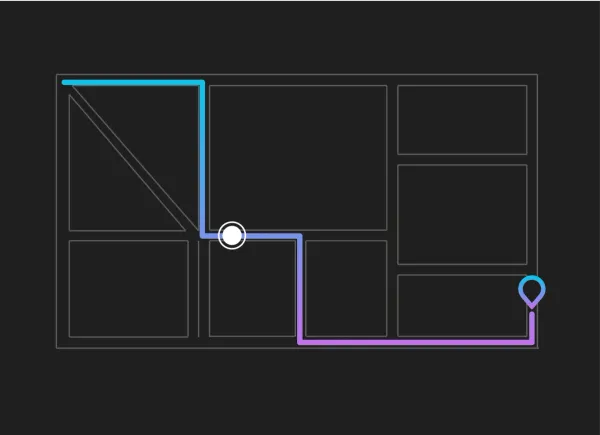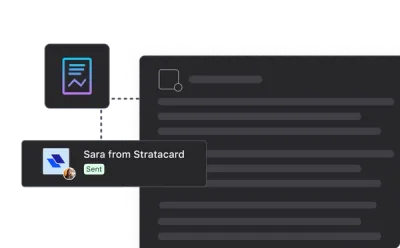
Total Addressable Market: Lessons from Uber’s Initial Estimates

Rewind to 2009, when a small company called UberCab is pitching the idea of a “next generation black cab service” to seed investors. Operating in just 2 markets (NYC & SF), offering an SMS system to hail a ride, and estimating a $4B market size, UberCab envisioned themselves as the black car leader for professionals in American cities.
Fast forward to 2019, Uber operates in over 60 countries, has expanded into food delivery, added coverage outside urban area, become a rental car alternative, and their total addressable market is rapidly approaching $300B (with some estimates surpassing $1T).
Investors go back and forth about the importance of TAM, as it is often inaccurate and is constantly changing. David Skok sums it up like this: “TAM’s role in a pitch deck is to convince investors that the company is chasing an opportunity big enough to achieve venture-scale returns with the right execution.”
So what lessons can we learn from Uber, whose total addressable market has multipled by almost 50x over the last 10 years?

Top-Down vs. Bottom-Up
There are 2 distinct ways we generally see companies use to model their total addressable market: top-down and bottom-up. David Skok, Founder of Matrix Partners, defines them simply:
- Top-Down – calculated using industry research and reports.
- Bottom-Up – calculated using data from early selling efforts.
David, an investor himself, tends to favor a bottom-up approach as opposed to a top-down one when evaluating potential investments. The reason being that a top-down approach relies on self-reported data from private companies, which can often be misleading, inaccurate or interpreted incorrectly. A bottom-up approach, however, uses firsthand data and knowledge of your own company and reduces the risk of the data being wrong or taken out of context.
With this being said, for a pre-revenue product or project a top-down approach is often the most feasible option. A top-down approach is comparatively easy since the only parameters it really requires is the total market value for your area and the market share you expect to receive whereas a bottom-up approach requires firsthand data.
As you may have already guessed, Uber estimated their market size at $4B by using a top-down approach. By using existing market data, Uber dramatically undersized what the “cab and car services” market looked like, and what it would look like in the future. Using a bottom-up approach, Uber could have used their data set from their first market, San Francisco, which would have shown that the overall market was expanding, as current users were taking more rides in Ubers than they ever had in cabs.
Related Resource: Total Addressable Market vs Serviceable Addressable Market
Related resource: Bottom-Up Market Sizing: What It Is and How to Do It
Related resource: Service Obtainable Market: What It Is and Why It Matters for Your Startup
Don’t Assume the Future Will Look Like the Past
As mentioned, one of the issues with a top-down approach is the assumption that the market will look the same in the future as it does today. Using historical market data does not include the expansion you would eventually see from new price points, convenience, and increased usability. Uber’s initial model for their total addressable market did not account for the changes a disruptive product (AKA theirs) would have to the entire market.
Sizing the market for a disruptor based on an incumbent's market is like sizing the car industry off how many horses there were in 1910.
— Aaron Levie (@levie) June 8, 2014
Bill Gurley, General Partner at Benchmark and defender of Uber’s valuation, has deeply studied Uber’s market and its ongoing expansion. When discussing Uber’s total addressable market and valuation Bill said, “Uber’s ease of use and simplicity have led many of its users to greatly increase the number of times they use an alternative car service. Some customers now use it as a second car alternative. As such, the company is meaningfully expanding the market for black car services, which is in turn a huge boon to the suppliers that share in the economic expansion.”
A “Wedge” Into the Bigger Market

With a sole focus on black car and professional services, Uber’s initial market size was just a small segment of their business today. UberCab was current-day Uber’s “wedge” into a much larger opportunity. Determining a total addressable market for your current offering and segment is a must, but don’t be afraid to paint a picture of the adjacent markets and where you envision your company headed in the future.
As Paul Graham, Founder of Y Combinator, puts it, “Your target market has to be big, and it also has to be capturable by you. But the market doesn’t have to be big yet, nor do you necessarily have to be in it yet. Indeed, it’s often better to start in a small market that will either turn into a big one or from which you can move into a big one.”
At the end of the day, investors view TAM as a picture of how big your business can be. Correctly modeling the market is vital to proving that your business should be venture-backed.
Check out our TAM Template
If you need a little help painting a picture of the market your solution could address, try using our TAM template! It has everything you need to start modeling the market your business can capture.
Related resource: What Is TAM and How Can You Expand It To Grow Your Business?



